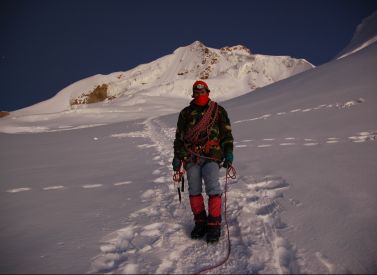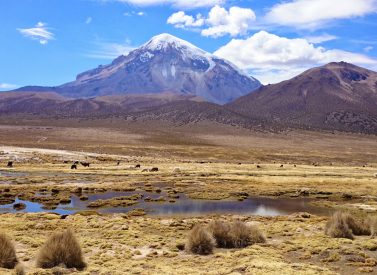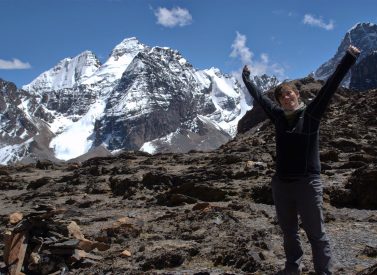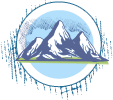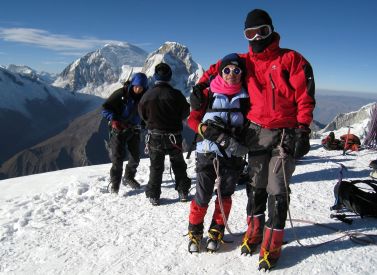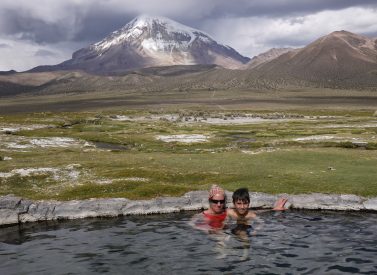Guided Mountain Climbing in the Peaks of Bolivia
 by Tom Shearman on 11th February, 2023
by Tom Shearman on 11th February, 2023
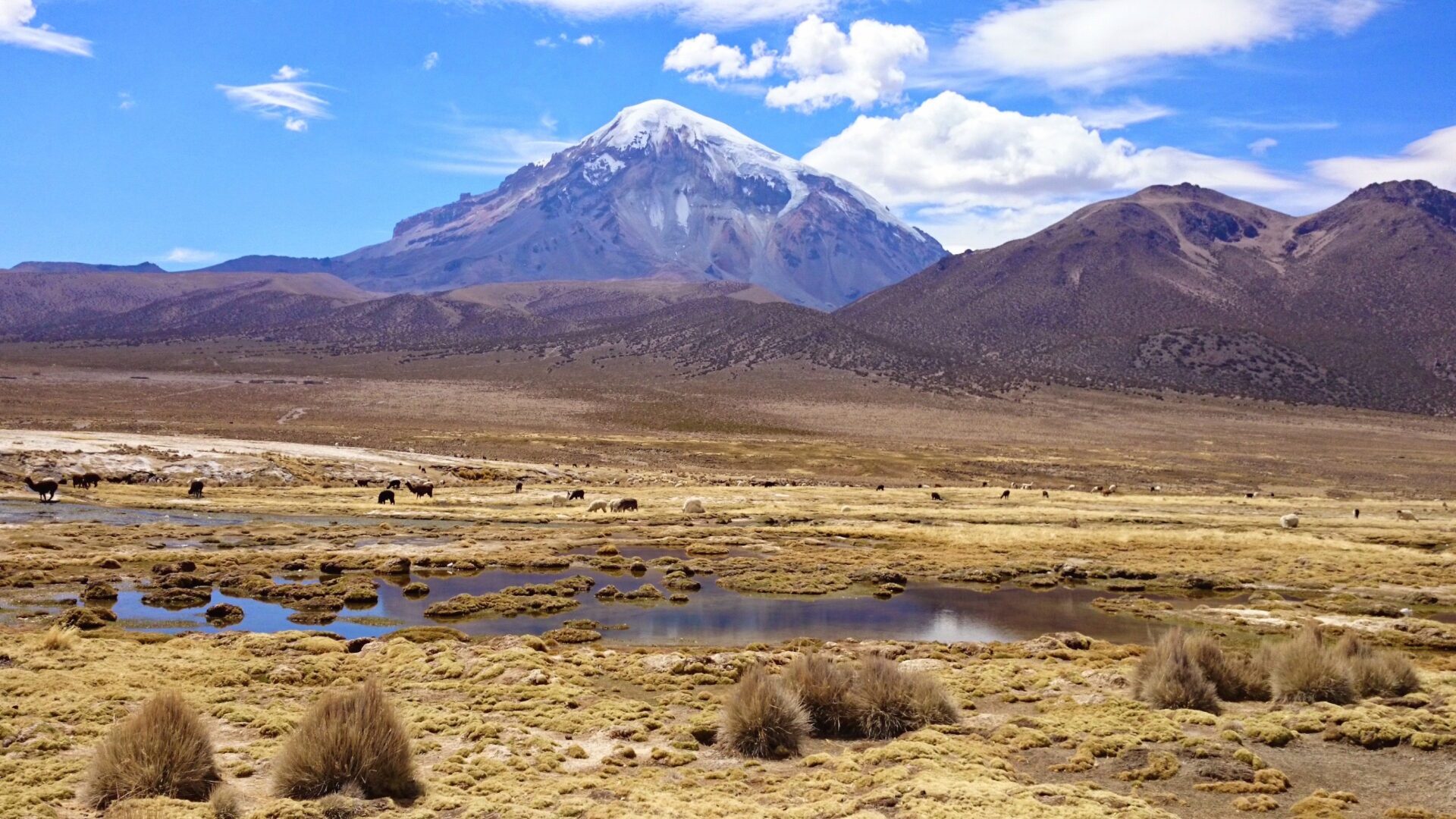
Bolivia is home to some of the most spectacular climbing peaks. Yet, its Andean tops remain blissfully free from large numbers of mountaineers.
There are several attractive climbing options near La Paz, giant, ice-clad volcanoes with tantalising summits. However, Bolivia’s remoteness means its climbing routes are less well-known than some of South America’s classic ascents.
Bolivia mountain climbing is best with a qualified, experienced guide. They, and their support team, will organise logistics like mules and food plus kit so that you can concentrate on the challenge ahead. The best guides know the best campsites and how to ensure your visit is positive for the environment and the local communities.
Guides also know the peaks like the back of their hands. This knowledge is even more critical as global warming continually changes climbing conditions, with new crevasses diverting routes in now-aged guidebooks. They can even help with climbing gear rental, making your flight over much more effortless.
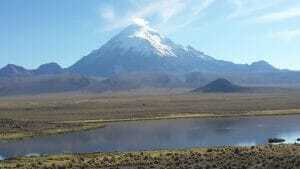
When’s the Best Time to Climb Bolivia’s Mountains?
The best season for climbing in Bolivia is from May to September. Some lower peaks may be climbable in April and early October but check with your guide first. Bolivia is also generally cheaper than other Andean climbing destinations like Peru, Ecuador, Chile, and Argentina.
Here are some of our favourite climbing peaks in Bolivia. We’ll start with the lower volcanoes and move to the highest. Of course, we recommend hiring a guide and their team to maximise your chances of summit success.
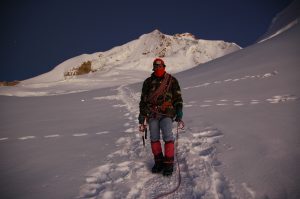
What’s the Best Place to Learn to Climb in Bolivia?
Tarija, nestled in Bolivia’s Cordillera Real mountain range, is the perfect mountain to learn and practice ice-climbing skills.
Its 5,300m/17,388ft peak sounds daunting. However, well-acclimatised trekkers in good physical shape can use Tarija as starting point before trying some of the higher peaks.
Most people follow a four-day route, starting with a drive from La Paz to the Palcoco valley. A short two-hour trek takes you into Condoriri National Park (4,650m/15,256ft), leaving the afternoon free to start learning how to climb.
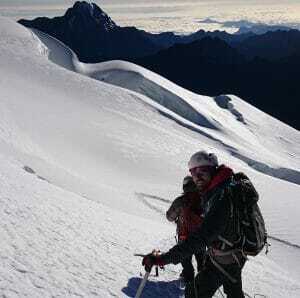
What Ice Climbing Skills Do I Need for Bolivia’s Mountains?
A guide will teach you:
- Basic crampon and ice axe techniques
- Self-arrest
- Knots
- How to cross technical terrain
- Rope team travel
- Snow and ice anchors
- Belay systems
- Ice-climbing techniques
We recommend at least two days of practising these skills until they become second nature.
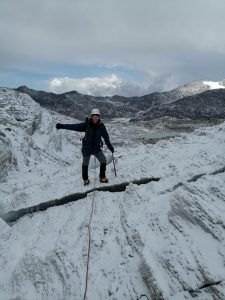
How Long Does It Take To Climb Tarija, Bolivia?
Most high-Andean climbs involve early starts, and Tarija is no different. Expect a wake-up around 3am for a 4am start. Your guide will probably bring you warming tea and breakfast, another bonus of hiring a support team.
Early starts allow ice climbers to take advantage of the best climbing conditions, e.g., when the snow is the hardest.
Tarija’s route involves slopes with gradients of up to 40°. The summit (5,300m/17,388ft) is around four hours from base camp and makes for an eight-hour round trip. There are great views of Pequeño Alpamayo from Tarija’s top.
Strong climbers could try Pequeño Alpamayo, which has climbs with 55° gradients and a total summit-day round-trip of 10-12 hours. Remember that any physical excursion at high altitude is more challenging than at lower heights.
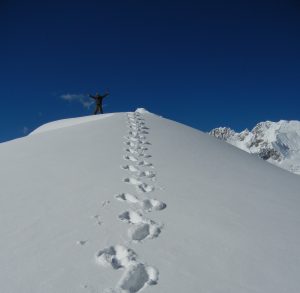
How Hard Is It to Climb Huayna Potosi?
Huayna Potosi is probably Bolivia’s most climbed mountain. Well-acclimatised climbers, perhaps fresh from bagging Tarija, can leave La Paz and return three days later with the Huayna Potosi feather in their cap.
Huayna Potosi, located in the Cordillera Real, is also suitable for practising and learning ice-climbing skills. It demands good fitness levels and a long acclimatisation time for those wishing to reach the peak successfully.
A basic mountain refuge serves as a base camp at 4,750m/15,584ft. These can sometimes get noisy in the wee hours as climbers clunk about in plastic boots, getting ready for their summit attempt. A fully-supported and guided tour could make use of tents, which may be more peaceful.
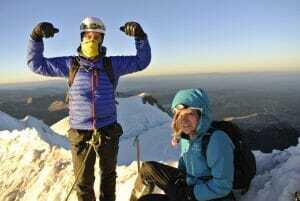
Do I Need Climbing Skills to Summit Huayna Potosi?
A second base camp, an even more basic mountain refuge called Refugio Rocas, is where most people spend their second night at a lung-bursting 5,200m/17,060ft. However, most folks are up and out at around 1am to tackle the summit.
Huayna Potosi has two steep climbing sections, and you’ll need to be roped up at all times. A guide is invaluable as you move up the ice sections in the dark. The hard work and technical application are worth it with the 360º views from the summit (6,088m/19,974ft).
The hardy can hike out in one day and be back in La Paz that same night, making Huayna Potosi a three-day trip from La Paz.
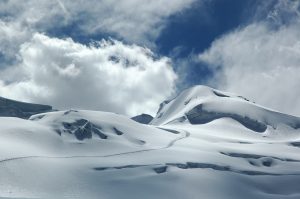
What’s the Best Way to Climb Illimani in Bolivia?
The Cordillera Real’s highest mountain is Illimani, which sits at 6,438m/21,122 ft, making it Bolivia’s second-highest peak.
Illimani towers over southern La Paz, making a beautiful frame for this picturesque mountain. It’s thought that the name Illimani comes from the Aymara word for golden eagle.
There are four principal summits on Illimani:
- Pico del Indio: 6,109m/20,043ft
- Pico Norte: 6,403m/21,007ft
- Pico Central: 6,362m/20,873ft
- Pico Sur: 6,438m/21,122ft
The best way to climb Illimani is with a guide and support team. The extra height, crevasses, extreme cold, and technical aspects make it a demanding peak to conquer.
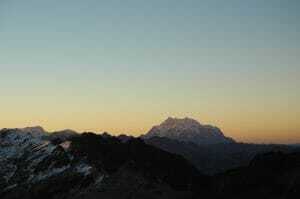
What Are the Climbing Conditions on Illimani?
Illimani involves consecutive days of ascending between 700-1,000m (2,296ft-3,281ft). Mountaineers need to be well-versed in crampon, rope, and ice-climbing techniques.
The first day involves a four to six-hour walk to a high camp called Nido de Cóndores, the Condor’s Nest. Global warming means Illimani’s glacier retreats each year. However, it should still reach Nido de Cóndores, situated at around 5,400m/17,717ft.
Summit days mean full-on climbing from the high camp onwards. Upon leaving Nido de Cóndores, there are fields of crevasses, 40-50° ice slopes, snowy and ice ridges, and snow bridges. Don’t underestimate the cold; much of the climb takes place in the mountain’s shade after sunrise.
You’ll ascend around 1,000m/3,281ft over 9-12 hours to reach Pico Sur, the highest of Illimani’s four peaks. We rate Illimani as a challenging and technical climb. The steady hand, knowledge, and encouragement of a guide are invaluable.
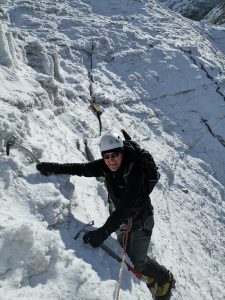
What’s the Highest Mountain in Bolivia?
Standing at 6,542m/21,463ft above sea level, Navajo Sajama is Bolivia’s highest mountain. It stands in the Cordillera Occidentals in the country’s southwest, some 10-15 miles from the border with Chile.
Sajama has given its name to the Sajama National Park, a natural reserve since 1939. The area is pocked with cave paintings, pre-hispanic archaeological sites, and winning scenery and is on UNESCO’s World Heritage Tentative List.
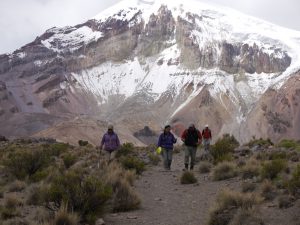
What Are the Climbing Conditions on Sajama?
Sajama has a shorter summit season and should be climbed between July and September. Other months may experience heavy snowfall, making trekking and climbing too difficult.
An experienced guide is vital for climbing Sajama. The mountain is often subject to severe storms and high winds before considering its extreme altitude. Temperatures are often well below -20 degrees Celsius, and mountaineers often encounter metre-high ice formations called penitentes. Crevasses complete the complicated picture.
Summit day is a 10-12 hour round trip. Expect slopes of 50-55°, snow and ice ridges, and a final long push up Sajama’s glaciers to the summit. Your reward is unrivalled views over the several 6,000m+ volcanoes nearby. On clear days, you can see the Cordillera Real in the distance.

Go Guided When Mountain Climbing in the Peaks of Bolivia
Bolivia has fantastic mountains to learn, practice, and hone ice-climbing skills.
The country is generally cheaper for climbing than its Andean neighbours without losing anything in scenery or challenge. We work with some of the best climbing guides, each with decades of experience in their homeland’s mountains.
Our guides take you to the best spots for learning and encourage you to express those skills on the mountain. They’ll look after you, bring you warm drinks and food, and always have an encouraging word for when the going gets tough. You only need to focus on the goal ahead.
For some climbers, volcanoes and mountains are there to be bagged, and then it’s time to move on to the next challenge. But with a guide, you’ll also hear about local cultures, beliefs, and outlooks, adding an extra layer to your trip.
We know that a guided mountaineering course or climb with us could lead to a whole new world of adventure. Contact us for more.
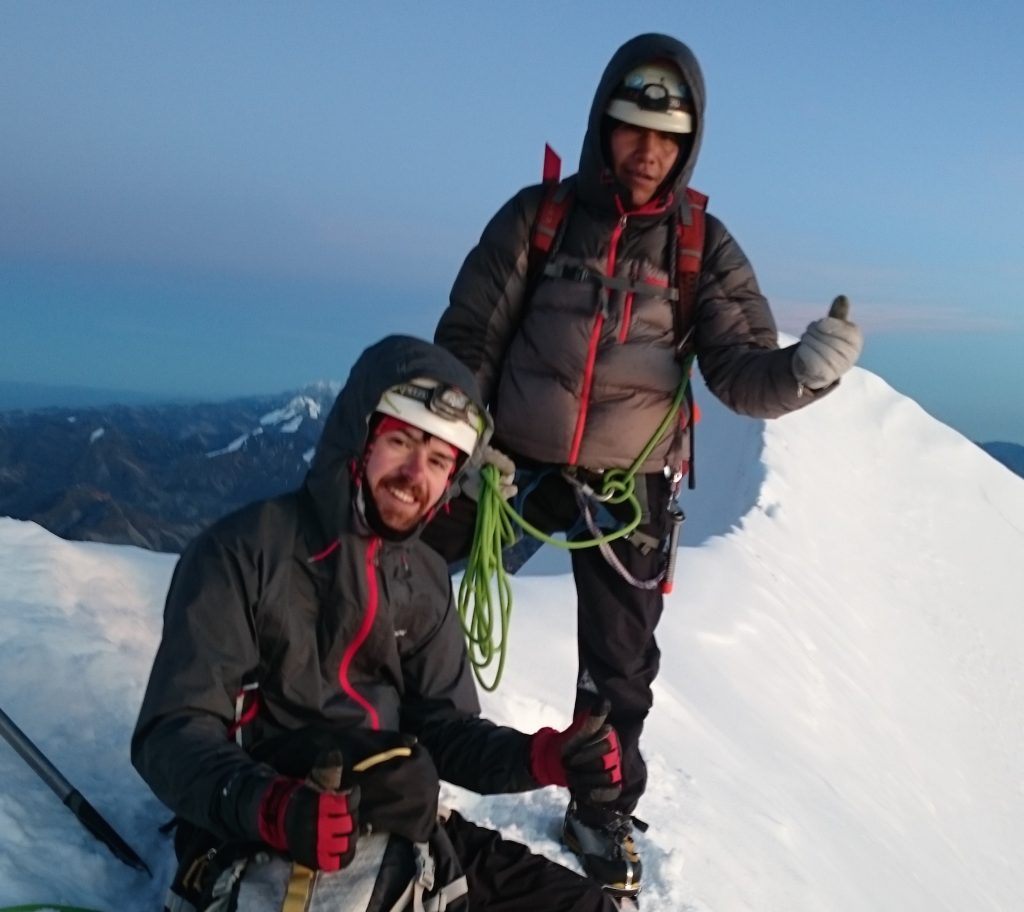


 a Tailor Made Tour
a Tailor Made Tour 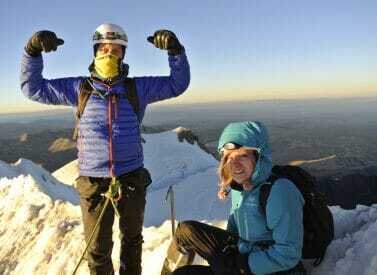

 a Group Tour
a Group Tour 